#structural expressionism
Explore tagged Tumblr posts
Text


Lloyd's of London Headquarters. Constructed 1978 - 1986. Photos by Richard Baker 18. März 1993.
2 notes
·
View notes
Text

Habitation Module
K.Ensch 2022-11-14
4 notes
·
View notes
Text

-Origarchitect 6-
25 June 2024
1665 x 2788 Digital Edited
#digital photography#digital art#urban expressionism#abstract urbanism#architectural expressionism#architectural abstraction#structural expressionism#structural abstraction#structural light#light art
0 notes
Text

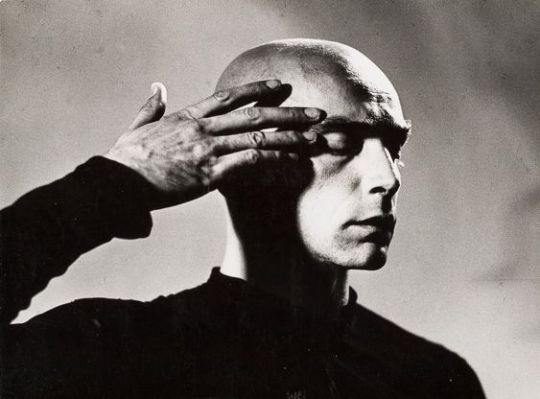
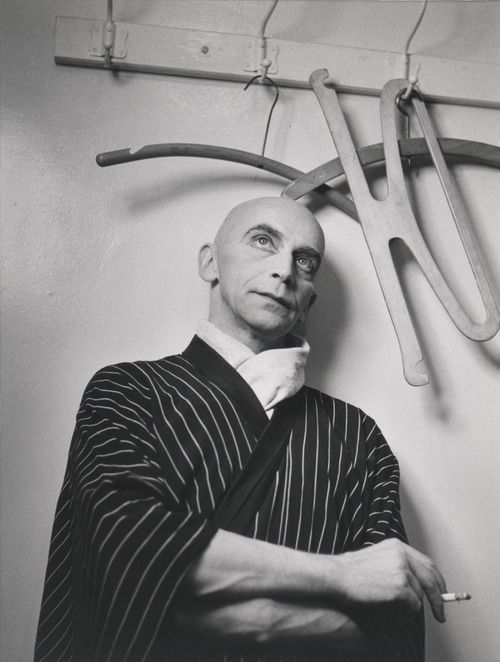

Faceclaims isn't usually something I do or even approve of – too often people tend to take it too far and give a real, living person the same traits as a fictional one (which can lead to rather embarrassing situations)
But for once I'll step out of my own line.... Harald Kreutzberg as faceclaim for Uldred ♥
#Harald Kreutzberg#inspiration#the hands#the skull shape#the facial features#the bone structure#the brow#the eyes#ngghhhh#german expressionism#german dancer#20th century#lgbtq+ artists#male dancer#faceclaim for#uldred#from#dragon age origins
10 notes
·
View notes
Photo
WRONG! the expressionists took one look at Conrad Veight and said my GOD! what a perfect face, could you FIND a face more suited to the aesthetic and expressive ideals of our movement
The man has INCREDIBLE facial structure in what world is it that we are now living where the og it girl renowned for his beautiful face is being slandered on the internet highway like this I really don't know







i like how every expressionist artist working in the Weimar film industry took one look at Conrad Veidt and decided that they NEEDED to roast him and his absurd facial structure
#its expressionism#man looks like a woodcut and emotes into a six mile radius#so first off jot that down#secondly he has some of the most beautiful facial structure of all time#i dislike the 'oh you must be breathing CO when you wrote that post' but op i fear you need a plumber
392 notes
·
View notes
Text










The Einstein Tower, Potsdam, Germany,
The Einstein Tower, is one of the best-known examples of German expressionist architecture. Designed as an amorphic structure of reinforced concrete, Mendelsohn wanted the tower to represent as well as facilitate the study of Einstein’s radical theory of relativity – a groundbreaking theorem of motion, light and space.
Astrophysicist Erin Finlay Freundlich commissioned Mendelsohn (along with a young Richard Neutra on his team) to design the Einstein Tower as a research facility for the theory of relativity. Between 1917-1920 Mendelsohn made numerous sketches of the facility, attempting to create a dynamic structure which would give form to Einstein’s groundbreaking theories. The resulting plan revealed a centralized observatory tower, banded by rings of windows, raised on top of a wavelike platform that would house the laboratories.
Influenced by the work of expressionist artists of the time, such as the painter Wassily Kandinsky and designer Hermann Obrist, Mr Mendelsohn began to search for new methods of construction that would allow expressional freedom, which is why he eventually settled upon easily sculpted reinforced concrete as his material.
Building commenced in 1921. Unfortunately, however, the sculpted concrete structure proved difficult to execute with the technological capabilities of the time. The failure to complete the building according to his original plan prevented him from designing such ambitious projects in the future, and the Einstein Tower remains his best known building.
The research center opened in 1924 and held the most important solar observatory facilities until World War II, when it was severely damaged. In 1999 the building was reopened, in honor of its 75th anniversary, following two years of renovation; today it houses a working solar observatory as well as a visitors’ center.
Erich Mendelsohn Architect
#art#design#stairwell#stairway#architecture#staircase#stairs#interiors#tower#observatory tower#1920s#concrete#solar observatory#observatory#potsdam#germany#expressionist architecture#einstein#einstein tower#amorphic
127 notes
·
View notes
Text
(alot of) Elliott headcanons
Some are random, some are unnecessary detailed
-Has a hair and skin care routine (that's why he needs that long to leave his house in the morning)
-Has a drivers licence, but he doesn't like to drive (mainly because he doesn't own a car, since he is in Pelican Town)
-Wears glasses when he reads or writes (I imagine when his kid shows him something on the phone, that he has to first pull out his glasses)
-Twirls his hair when he is concentrating or nervous
-Combs his hair when he's bored, even if it's already perfectly combed
-Can't cook very well, but is always trying his best
-Can sing and likes to sing
-If Elliott didn't became a writer, he would be a musician
-Likes to dance
-Randomly uses other language(s)
-He is confident, especially when it comes to his looks. He likes his appearance, but doesn't brag about it
-Coffee addicted
-Elliott picked up drawing, because he thought it looked easy when he saw Leah doing it without problem
-Likes all the flowers, but the rose especially
-Is a foodie (ofc)
-Doesn't swear. He thinks it's unprofessional and will ruin his vocabulary
-When he's mad or irritated, he'll accidentally say fuck or shit, but will instantly, dramatic cover his mouth in shock
-He doesn't get angry easily, but gets fustrated alot
-Elliott would never resort to violence, if there isn't a reason too (only if he gets attacked or his partner gets attacked)
-Probably had a little drinking problem before he got married, but doesn't like to admit it
-He's lightweight (gets drunk easily)
-Always wears a hair tie on his wrist. Just in case
-Actually doesn't like getting his hands dirty
-He talkes alot and most of the time, people don't really understand him, but they just let him talk
-Elliott uses large words that the average Pelican townie hasn't heard before
-Loves telling bad jokes
-Has no idea how to use a computer
-Carries a small notebook with him, in case a idea pops up for his novel
-Stole from Pierre once because he didn't had enough money, Elliott felt extremely guilty but also didn't wanted to tell Pierre, so he didn't shop there for a few weeks
-He doesn't shave constantly, but when he does, he shave his whole body as soon as he can't see his skin anymore
-He only shaves his beard to make his face look more youthful and to show off his bone structure
-He's always warm
-Elliott sometimes walks around naked in his cabin, mostly in the morning or at night (also in the farmhouse)
-Will occasionally takes morning laps (single and married)
-Has tried smoking once and almost threw up
-If Elliott has a problem with a townie, he just won't speak with them, if the issues wasn't his fault. (He basically waits until they apologize)
-His voice gets higher when he's nervous or scared
-He snores, not extremely loud but you can hear him outside of the room
-Sweats easily
-Elliott is soft spoken, if he's mad tho, his voice ton gets "dark" and even a bit louder
-Elliott's a fast thinker, he always has the "right" thing to say and knows good comebacks
-Elliott knows alot of useless stuff about alot of things
-Remembers the names from people he just met
-Pays attention to small details (people or in books)
-Gets offended when someone uses foul language, in front of him or to him
-He has problems to fall asleep sometimes
-His handwriting is small and in cursive, that almost no one can read, everytime he writes something down for someone, he writes in block letters
-He is expressional, you can tell if he's sad, mad or happy
-Doesn't really celebrate his birthday, for him it means that he'll get older and that makes him depressed
-Elliott is strong
-But he got no combat knowledge
-Falls in love FAST
-Is good at guessing
-Gets spooked easily
-He collects useless stuff like: shells, rocks, leaves and blossoms
-Elliott is resentful, he'll never forgive you for divorcing or cheating, but he'll cry about it for a looooooong time
-Writes love letters and poems, that he wishes to someday he can share with his future spouse
marriage
-When it's a slow, lazy day on the farm, Elliott would just wear a tshirt and sweatpants, when he knows he won't go outside today
-Elliott only shows that side of comfort to his spouse. He'll never walk outside not wearing his signature formal wear, because he likes people to believe that he always dresses that good.
-Doesn't want to stay in a dirty place for too long, that's why he likes to clean the farm house
-Is always paranoid when his spouse comes home too late (even if it's only 5 minutes)
-Preferres gardening work over farming work
-Elliott jobs will be: planting plants, takes care of the greenhouse, laws the lawn, waters everything and remove weed
-Actually took his piano with in the farm house. (would be cool if the piano would be in his farm room or at least a furniture item that you get when marrying Elliot)
-When his spouse is home and tense, he'll give them a massage, draw them a bath or just be there for them
-Elliott will "force" his spouse to take a day off, to just relax and spend some time together
-Will agree on being a house husband
-Now that Elliott has access to a kitchen, he'll try some dish combinations
-Elliott only cooks when his spouse isn't home, so that they can't see the mess Elliott is going to make in the kitchen
-If his spouse is pregnant, he'll take over the farm and other activities for them, so that they have no stress
-Will speand his own money on giving gifts to his spouse or child(ren)
-His spouse may wake up with Elliott's hair on their face
-Elliott needed to get used to sleep in bed with someone, so in the early states, he would take over the whole bed on accident
-Usually calls his spouse: love, dear, honey, sweetheart, sweetie and darling. If the name allowds it, he also gives them a nickname
-If he finds his spouse passed out (and isn't hurt), he carries them all the way home
-If his spouse has long hair, he likes to play with it
-Secretly watches his spouse from afar if they work on the farm
-Puts his relationship experiences into his novel
-He keeps a picture of his spouse (and children) in his wallet
-Elliott always wears the mermaid pendant, it doesn't matter when or where
-Give's his spouse a good night kiss, if they fall asleep before him
-Man loves to cuddle
-Likes to rest his head on his spouse's chest
-When he's in the town, he wears the mermaid pendant and a wedding ring, to show off and let everyone know that he belongs to a wonderful person
NSFW version
#stardew valley#stardew valley elliott#elliott stardew valley#stardew elliott#sdv elliott#sdv elliot x farmer#sdv elliott headcanon
127 notes
·
View notes
Text





Frank Stella was an American painter, sculptor, and printmaker known for his contributions to minimalism and post-painterly abstraction. Stella gained prominence in the late 1950s with his "Black Paintings," featuring symmetrical patterns of black stripes separated by thin lines of exposed canvas. These works rejected the emotional depth of Abstract Expressionism in favor of a more structured, geometric approach.
Stella explored different styles, moving from flat, hard-edged geometric compositions to dynamic, three-dimensional constructions. His later works incorporate relief elements, vivid colors, and complex shapes, blurring the lines between painting and sculpture.
18 notes
·
View notes
Text
look, i have heard what everyone is saying regarding this being "the artist's style", but this is.... really blatantly AI-assisted, at the very least.

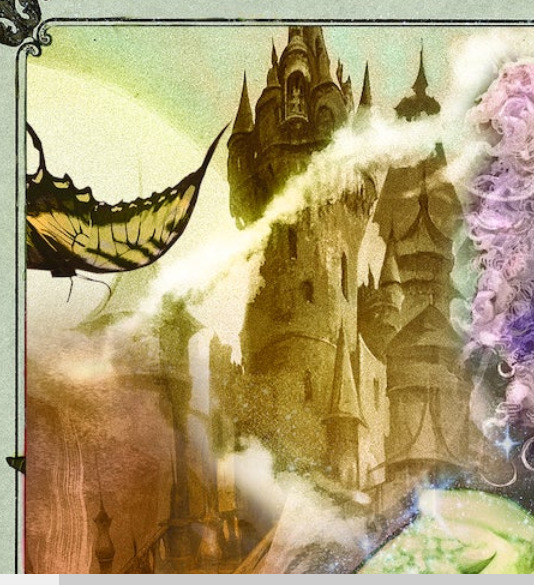
Incomprehensible architecture + the antenna of the butterfly which merges with the turret of the tower in the background

Crumb's head being so thoroughly lopsided + the eye on the right of the picture being asymmetrical with the one of the left. The whiskers on the left side of the face which merge with the ear. The chain around the cloak has all sorts of random melting and blending, and the bit which hangs down to Crumb's belt splits from one rope into two.

The patterns on Hop-a-lot's face, his gauntlets, the strange piece sticking out of the plating at his elbow. The belt pouches having melted flaps that don't seem to connect properly to anything. The sword??????? I don't expect every link in the chain mail to be rendered, but the way that they also melt into one another is hallmark of genAI. Look at the belt buckle, which looks as though it is supposed to join three strips of leather. The construction simply makes no sense.
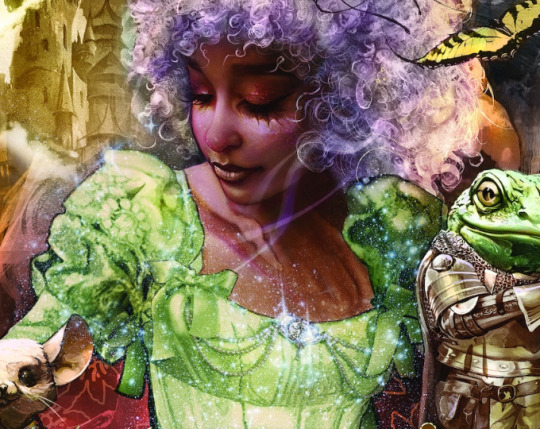
Also, not to be pedantic, but Ella's eyelashes are pointing in different directions, such that it looks like one of her eyes is open while the other is closed. Also, the eye on the right side of her face from the viewer's perspective has that strange.... flesh ridge???? in the corner??? Her makeup and her eyelashes melt together to create those points in her blush under her eye.

I have used blending layers to add textures before. This is not what that process looks like. The layers are smeared and indistinct. Also, there's another strange flesh ridge near the right side of her chest. The strands of pearls are different lengths, the pearls smeared together where they join at the brooch. The brooch has those huge sparkles on it, probably to cover the fact that it looks like it has something dangling from it, which merges with the front of Ella's bodice. The strands of the ribbons merge into the front of her dress, the pleats in her bodice are tightly folded on one side, but nonexistent on the other.
I have no idea why Dan Quintana would use AI, but like... this work has a great number of details which indicate that it wasn't created with human hands.
Like, at the very least, Hop-a-lot and Crumb were rendered in a different resolution and added to the composition as elements.
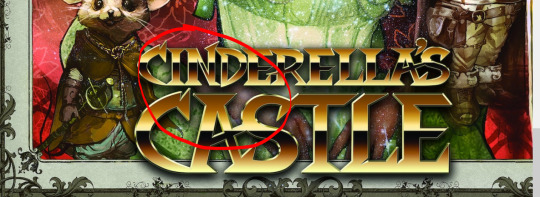
Where is her wrist??????? How does her hand connect with her sleeve? Between the letter I and N in Cinderella, there is a tangent from the sleeve that descends, but then, disguised behind the N, there seems to be a place where the wrist doesn't make it all the way over into the fabric.
I am ALL FOR expressionism, impressionism, and surreal elements. I do not think that is what happened here. Also, I think it's telling that Sir Hop-a-lot doesn't have his canonical facial hair. Like, not to be a huge pedant, but I think that the fact that none of the designs featured here look anything like what's in the final show is suspicious.
Honestly, I think that I would like for Starkid to get the working files for this piece, and see the layer structure. I simply do not believe this was done 1. Traditionally, and therefore has no layers to inspect or 2. As one solid layer. There is no way someone would be individually rendering transparent glitter in a traditional piece like that.
#starkid#cinderella's castle#musicals#team starkid#cinderella's castle musical#crumb the mouse#sir hop a lot#ella ashmore
15 notes
·
View notes
Text

Pez Dispenser (1984) by Jean-Michel Basquiat Jean-Michel Basquiat was an American artist who rose to success during the 1980s as part of the Neo-expressionism movement, first gaining notice in the late 1970's as part of the graffiti duo SAMO along with Al Diaz. In the late 70's/ early 80's the Lower East side of Manhattan was a cultural hotbed where rap, punk, and street art melded into early hip hop culture and SAMO was a relevant part of that movement. By the early 80's his paintings were being exhibited at galleries and museums internationally. Basquiat became the youngest artist to ever take part of Documenta, a art exhibit that takes place once every five years, in Kessel, Germany. He was 21. The nesxt year he became the youngest artist to exhibit at the Whitney Biennial in New York. In 1992 the Whitney Museum held a retrospective of his work.
Basquiat's art focused on dichotomies such as wealth versus poverty, integration versus segregation, and inner versus outer experience. He appropriated poetry, drawing, and painting, and married text and image, abstraction, figuration, and historical information mixed with contemporary critique. He used social commentary in his paintings as a tool for introspection and for identifying with his experiences in the black community, as well as attacks on power structures and systems of racism. Since his death at the age of 27 in 1988, Basquiat's work has steadily increased in value. In 2017, Untitled, a 1982 painting depicting a black skull with red and yellow rivulets, sold for a record-breaking $110.5 million, becoming one of the most expensive paintings ever purchased.
#classic#style#gay#art#gay artist#gay art#jean michel basquiat#gay history#lgbt art#lgbt artist#lgbt history
37 notes
·
View notes
Text

Doppelganger
K.Ensch 2022-11-13
2 notes
·
View notes
Text

-Origarchitect 7-
19 August 2024
4000 x 1800 Digital Unedited
#digital photography#digital art#urban expressionism#abstract urbanism#architectural expressionism#structural expressionism#structural abstraction#structural light#light art#architectural abstraction
0 notes
Text

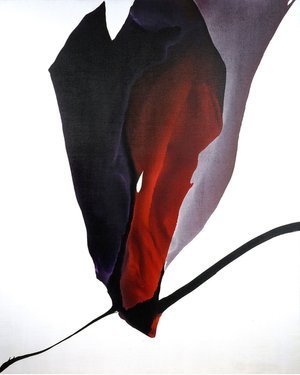




Paul Jenkins (1923-2012)
Born and raised in Kansas City, Missouri, Paul Jenkins’ interest in art began with frequent visits to the Nelson-Atkins Museum of Art where he was drawn to its Asian art collection. While a high school student, Jenkins experienced the chemistry of painting working summers in a ceramics factory. Watching expert artisans at work, Jenkins witnessed the tension in timing the correct moment to add something in an artistic creation. After serving in World War II, Jenkins used his military service benefit to attend the Art Students League in New York from 1948 to 1952. Jenkins’ four year course at the League occurred during the advent of Abstract Expressionism, a style which saw painting not as a recording of an object or place but as an emotional event. Meeting Jackson Pollock, Mark Rothko, and Barnett Newman, Jenkins realized his own artistic goal was to transform intangible feeling into valid pictorial forms. He saw that Pollock did this in woven webs of paint while Rothko achieved it using tonal fields of color as containers of light. Jenkins noted that both Pollock and Rothko achieved structure while leaving no trace of brushstrokes. In becoming an Abstract Expressionist, Jenkins discarded deeper perspective, recognizable subject matter, a contained composition, and standard brush use. Perhaps remembering the glazes melting, flowing, and interacting in the kiln at the ceramics factory helped Jenkins discover his unique painting technique.
55 notes
·
View notes
Text
Black Skin White Screens
Another email response that I think might be useful here. Person was asking a question about why nobody cites Black film as influences: When Moonlight dropped nobody was talking about Clockers even though there were clear visual and dramatic elements referenced. Instead everyone (the filmmakers, critics, etc) was talking about French and Hong Kong cinema. So people even deny Spike's influence.
But, I think you might be mistaking a symptom for the disease. Tons of Black filmmakers were influenced by nonBlack filmmakers. French Impressionism & German Expressionism influenced Julie Dash; Charles Burnett loved British Kitchen Sink cinema; Bradford Young and I had a great convo about Apichatpong Weerasethakul one time; Haile Gerima almost killed me bc I interrupted a screening of Solaris by one of his GOATS Andrei Tarkovsky 😂 Even John Akomfrah's affective proximity, which AJ loves to employ, is an evolution of Eisenstinian montage.
The difference is that most of these filmmakers were steeped in, trained in, and worked in Black film. They weren't working within the studio system (though Burnett would go on to work with Disney in the 90s). There were Black spaces from Studio Museum in Harlem to Performing Arts Society of Los Angeles. There was public funding for TV that Marlon Riggs, Chamba Productions, etc. were able to take advantage of. Now all of these programs are either severely underfunded or gone completely. I think this is the primary reason: There aren't that many (semi)autonomous Black film/cultural spaces left. And so there's no cultural push for such things.
All the money and attention is in white spaces. I know some filmmakers who either did a concept short for a feature or are in prepro on their first feature. The people around them have told them that they need to find European equivalents to their Black influences or else the money and attention will dry up. It's a structural thing. Two suggested comparisons that stuck out to me were Bill Gunn & Steven Soderbergh and Kathleen Collins & Maya Deren. These directors are not doing anything close to the other. It's just "scrappy indie director" and "known female director". I guess that's how things are commodified now.
Back in the 90s John Singleton went to Senegal to study under Ousmane Sembène. Part of the conversation is in Manthia Diawara's Sembéne: The Making of African Cinema. Diawara screened a bunch of cut footage from this conversation a couple years back but I don't think it's online. So literally 30 years ago there was still a connection to the past. What you're describing is a recent development.
So much of the last decade of Black cinema is animated by liberal identity politics and white guilt. from How They See Us to Birth Of A Nation. Even films that aren't so explicit about the white gaze like Moonlight are still affected by this phenomenon. It's not shocking that it won best picture after #OscarsSoWhite nor is the volume of Black cinema represented that year surprising. I have my suspicions that Barry was affected by the same antiBlack forces my friends are fighting now. He was tweeting about Clockers in the months preceding production.
The industry is in flux right now + the transition from Obama to Trump (which we're still in btw) are all at play here. Film, especially Black film, is in retreat right now. The best we can do at this moment is be torch bearers of our lineage. I always feel like I'm mopping the ocean but every now and then a legend messages me a thank you or a new subscriber shows their appreciation.
In this climate of "Black firsts" (well firsts in white spaces) it's good to see you articulate how you want to build on the past. Being the Black 101st means that despite colonialism and slavery and Jim Crow and prison and everything else, nothing can stop the force of the Black camera and that should be honoured and celebrated.
18 notes
·
View notes
Text










Book Series - Dystopian Novel Covers
As my first post on my portfolio tumblr, I'd like to showcase my design work done for a final project for a class. The series of books are all classics in the dystopia genre and inspired by German Expressionism and Dada. It was also reflected and chosen due to the recent U.S. election outcome and the relevance of each novel in our current times. The covers reflect the outer shell of each society, which crumbles under a facade of structure. In contrast, the inside cover reflects the strategically hidden plans of governmental work taking the rights away from the people and the destruction that is being left in its wake. The works were all first crafted by hand with the covers being done on poster board. The imagery was etched with an X-Acto knife pulled apart to show the image and then ripped on the sides. The title work was all copied paper and pasted on. Digital work was adding a spine title font and mock publisher. The inside covers were created via tiled black cardstock and 2 different types of chalk markers rubbed together for texture. An additional copy paper was used to indicate the author's name. Songs heard during the craft:
#design#graphic design#art#dystopia#1984#fahrenheit 451#brave new world#artist#portfolio#Spotify#book design#book cover
10 notes
·
View notes
Text

Bibliography & Footnotes
Andrews, D. (2000) “The ‘Three Ages’ of Cinema Studies and the Age to Come.” PMLA (115)3 (May): 341–51.
— . (1985) “Of Canons and Quietism: Dudley Andrews Responds to Jane Staiger’s ‘The Politics of Film Canons’.” Cinema Journal (25)1 (Fall): 55–61.
Arnheim, R. (1997) Film Essays and Criticism (B. Benthien., Trans.). Madison: University of Wisconsin Press.
— . (1989) Film as Art. Los Angeles: University of California Press.
Aronowitz, S. (1994) Roll Over Beethoven. Hanover, NH: Wesleyan University Press.
Baudry, J. (1986) “The Apparatus.” Narrative, Apparatus, Ideology: A Film Theory Reader (P. Rosen., Ed.). New York: Columbia University Press: 299–319.
Bazin, A. (1996) Bazin at Work: Major Essays and Reviews from the Forties and Fifties. (A. Piette., Trans.). New York: Routledge.
— . (1967) What is Cinema? (H. Gray., Trans.). Los Angeles: University of California Press.
Bérubé, M. (1994) “Pop Goes the Academy: Cult Studs Fight the Power” Public Access: Literary Theory and American Cultural Politics. London: Verso.
Brantlinger, P. (1990) Crusoe’s Footprints. New York: Routledge.
Brunette P., & D. Wills. (1989) Screen/Play: Derrida and Film Theory. Princeton, NJ: Princeton University Press.
Cavell, S. (1981) Pursuits of Happiness: The Hollywood Comedy of Remarriage. Cambridge, MA: Harvard University Press.
Cohn, J. (2009) “What is Anarchist Cultural Studies? Precursors, Problems and Prospects.” New Perspectives on Anarchism. Ed. N. Jun & S Wahl. Lanham, MD: Lexington Books: 403–24.
Deleuze, G. (1990) Expressionism in Philosophy: Spinoza. (M. Joughin., Trans.). New York: Zone Books.
Deleuze, G., & F. Guattari. (1977) Anti — Oedipus: Capitalism and Schizophrenia (R. Hurley, M. Seem, & H.R. Lame., Trans.). New York: Viking Press.
— . (1986) A Thousand Plateaus — Capitalism and Schizophrenia (B. Massumi., Trans.). Minneapolis: University of Minnesota Press.
— . (1986) Kafka: Toward a Minor Literature (D. Polan., Trans.). Minneapolis: University of Minnesota Press.
Deleuze, G., & C. Parnet. (1987) Dialogues (H. Tomlinson & B. Haberjam., Trans.). New York: Columbia University Press.
Derrida, J. (1981) Positions (A. Bass., Trans.). Chicago: University of Chicago Press, 1981.
— . (1978) Writing and Difference (A. Bass., Trans.). Chicago: University of Chicago Press.
— . (1976) Of Grammatology (G.C. Spivak., Trans.). Baltimore: Johns Hopkins Press.
During, S., Ed. (1993) The Cultural Studies Reader. New York: Routledge.
Eiseinstein, S. (1969) The Film Sense and The Film Form. New York: Harcourt Brace.
Fiske, J. (1993) Power Plays, Power Works. New York: Verso.
Foucault, M. (2003) The Essential Foucault (P. Rabinow & N. Rose., Eds.). New York: The New Press.
— . (1995) Discipline and Punish (A. Sheridan., Trans.). New York: Vintage Books.
— . (1994) The Order of Things. New York: Vintage Books.
— . (1990) The History of Sexuality: An Introduction. New York: Vintage Books.
— . (1972) The Archaeology of Knowledge (A. Sheridan., Trans.). New York: Pantheon.
— . (1965) Madness and Civilization (R. Howard., Trans.). New York: Pantheon.
Frank, T. (2000) One Market Under God. New York: Anchor Books.
Friedberg, A. (1997) “Cinema and the Postmodern Condition.” Viewing Positions: Ways of Seeing Film (L. Williams., Ed.). New Brunswick, NJ: Rutgers University Press: 59–86.
Gans, H. (1985) “American Popular Culture and High Culture in a Changing Class Structure.” Prospects: An Annual of American Cultural Studies 10: 17–37.
— . (1974) Popular Culture and High Culture. New York: Basic Books.
Grossberg, L. (1992) We Gotta Get Outta This Place. New York: Routledge.
Heath, S. (1976) “Narrative Space.” Screen (17)3: 68–112
Hoggart, R. (1995) The Way We Live Now. London: Chatto & Windus.
Horkheimer M., & T. Adorno. (1993) “The Culture Industry: Enlightenment as Mass Deception.” The Dialectic of Enlightenment. Trans. J. Cumming. New York: Continuum: 120–67.
Jay, M. (1997) Downcast Eyes: The Denigration of Vision in Modern French Thought. Berkeley: University of California Press.
Kracauer, S. (1997) Theory of Film: The Redemption of Physical Reality. Princeton, NJ: Princeton University Press.
Leavis, F.R. (1952) Scrutiny: A Reprint, 20 volumes. Cambridge: Cambridge University Press.
Levine, L. (1988) Highbrow/Lowbrow: The Emergence of Cultural Hierarchy in America. Cambridge, MA: Harvard University Press.
Marcuse, H. (1964) One — Dimensional Man. Boston: Beacon Press.
May, T. (1994) The Political Philosophy of Poststructuralist Anarchism. University Park, PA: Pennsylvania State University Press.
McRobbie, A. (1994) Postmodernism and Popular Culture. New York: Routledge.
Metz, C. (1974) Language and Cinema. The Hague: Mouton.
— . (1973) “Current Problems of Film Theory” (D. Matias., Trans.). Screen 14:1–2: 40–88
Mitry, J. (1997) The Aesthetics and Psychology of Cinema (C. King., Trans.). Bloomington, IN: Indiana University Press.
Mulhern, F. (1979) The Moment of Scrutiny. London: Verso.
Mulvey, L. (1975) “Visual Pleasure in the Narrative Cinema.” Screen (16)3: 6–18.
Polan, D. (1985) “The Critique of Cinematic Reason: Stephen Heath and the Theoretical Study of Film,” boundary (2)13,2/3 (Winter — Spring):157–71.
Staples, D. (1966–67) “The Auteur Theory Reexamined.” Cinema Journal 6: 1–7.
[1] For an excellent overview of formalism in film theory, see (Andrews, 2000: 341–51).
[2] See, for example, Leavis (1952). On Leavis’ dismissal of cinema and mass culture more generally, see Mulhern (1979).
[3] This position receives one of its fullest articulations in Marcuse (1964).
[4] For example, Barthesian semiotics, Althusserian Marxism, and Lacanian psychoanalysis.
[5] Of particular importance are Baudry (1986: 299–319), Heath (1976: 68–112), Metz (1973: 40–88; 1974), Mulvey (1975: 6–18).
[6] For example, statements about airplanes could not be uttered in the Middle Ages because the historical a priori condition necessary for the production, transmission, and intelligibility of such statements within discourse (viz., the actual existence of airplanes) was not yet satisfied.
#bibliography#reading lists#cinema#film theory#movies#anarchist film theory#culture industry#culture#deconstruction#humanism#truth#the politics of cinema#anarchism#anarchy#anarchist society#practical anarchy#practical anarchism#resistance#autonomy#revolution#communism#anti capitalist#anti capitalism#late stage capitalism#daily posts#libraries#leftism#social issues#anarchy works#anarchist library
7 notes
·
View notes